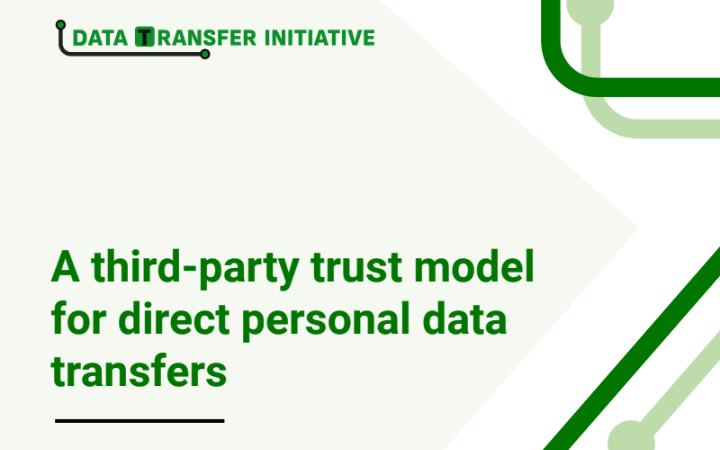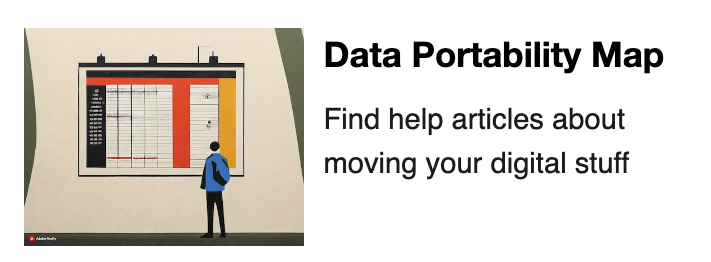New from DTI - Trust Model and Portability Map

We have two big announcements from DTI today - too big to save for our next newsletter! The first is the publication of our trust model report, which we previously announced in November, describing the challenge of building trust among service providers who increasingly support the direct transfer of personal data (as opposed to first downloaded by the user, and then separately uploaded). Four months later, our new report provides a full articulation of this exercise and its scope and purpose, together with an initial model that articulates the key elements of building trust in direct data transfers, and sample questions to illustrate the kinds of data to gather.
We believe and hope that this trust model, which reflects the input of numerous stakeholders throughout the ecosystem (though remains the product of DTI solely), not only reflects the growing alignment of expectations and practices among parties, but will also continue to increase such alignment in the months to come. Nevertheless, the direct transfer paradigm of data portability is still new, and we expect to revisit and likely revise the model as we learn more over time.

Equally important and exciting is the release of our first ever, user facing Data Portability Map tool. To lean in on DTI’s growing role as a hub for all things data portability, the Portability Map is built as a central interface for resources on how to move personal data from one service to another. Our belief is that such a repository, properly designed, will help people both understand that they can move their data and learn how to take action. We also hope to gather user signals from this tool – indications where the current set of portability offerings is not satisfactory, and where more investment in particular data types or service pairings would be worthwhile.
Some of the articles in the Data Portability Map describe how to use Data Transfer Project-powered tools we help maintain at DTI. Others involve third-party services, or links to informational pages provided by either the sending or receiving service at hand. We’ve included some notes on each page about what it does and doesn’t do. As of today, the repository is a bit sparse; this is more like a beta project than a full v1.0 release. We could use your help! Our article repository is open source and we would welcome your contributions (pending review to keep them in line with the product vision, of course). So, too, is the code for Portability Map open source, if you have any suggestions for improvements in the tool itself.
Believe it or not, it has been less than a year since we officially launched DTI. We’re proud of these latest achievements for this young organization, and we are looking forward to continuing to work alongside all of you to empower people by building a vibrant data portability ecosystem.
